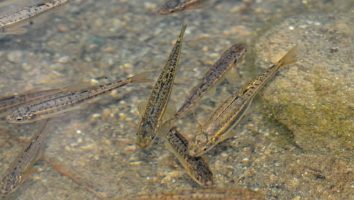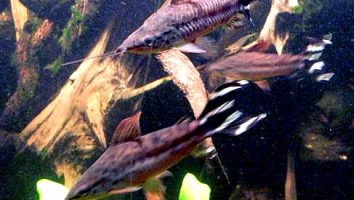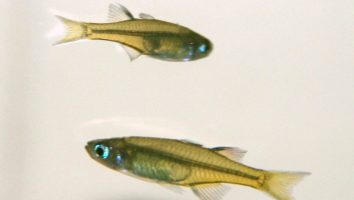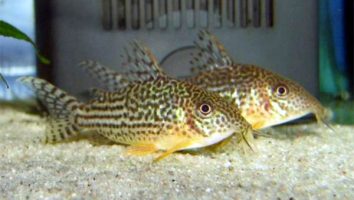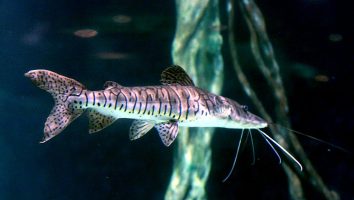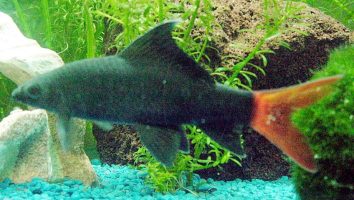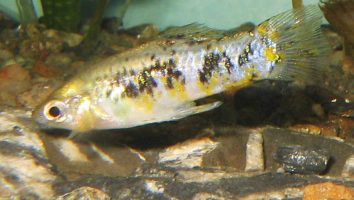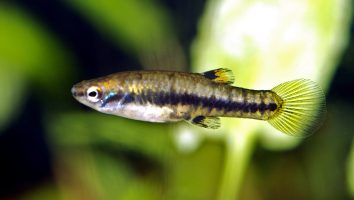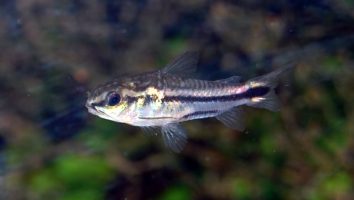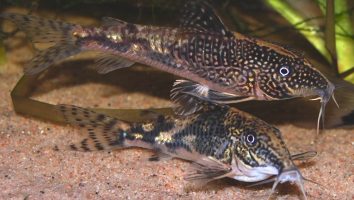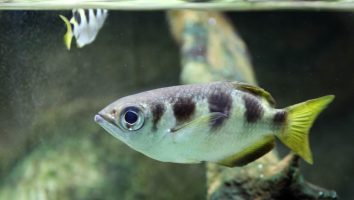The cherry barb is a beautiful and easy to care for freshwater fish that is perfect for beginners. This species is very peaceful and can be kept in a community tank with other peaceful fish. They are also very easy to breed!
This guide will teach you everything you need to know about cherry barb care. You’ll learn about their diet, size, lifespan, and more!
Table of contents
Species overview
Cherry barbs (Puntius titteya) are a freshwater fish that is native to Sri Lanka and India. In the wild, they can be found in slow-moving streams and rivers with a sandy bottom and plenty of vegetation.
Cherry barbs are a peaceful fish that does well in a community tank. They are social creatures that prefer to be in groups of at least 6. In the wild, they are known to school together.
These fish are relatively easy to care for and are a good choice for beginner aquarium hobbyists. They are not picky eaters and will accept most types of food.
The Cherry barb is a beautiful fish that is known for its bright red color. The males are more brightly colored than the females. The males also have a more pointed tail than the females.
Appearance

The cherry barb is a very popular freshwater aquarium fish that is easily recognized by its bright red coloration.
This color extends from the tip of its nose all the way to the base of its tail, and it is especially vibrant on the males of the species.
The cherry barb is a small fish, only growing to be about 2 inches in length at most.
Its body is slender and elongated, with a slightly flattened belly.
The cherry barb has a pair of small, rounded fins on its back and another smaller pair of fins on its underside.
Its tail fin is forked, and its scales are very small and delicate.
Lifespan
The average lifespan of cherry barbs is 4 to 5 years. However, there have been reports of these fish living up to 10 years in captivity.
Cherry barbs are a very hardy species of fish. They can adapt to a wide range of water conditions and are not too picky when it comes to food.
However, their lifespan can be impacted by things like poor water quality, stress, or a suboptimal diet.
Size
The average Cherry Barb size is around 2 inches long. However, some have been known to grow up to 3 inches in length. These fish are relatively small, so they don’t need a lot of space to swim around.
Tank
Tank Size
The minimum tank size for cherry barbs is 10 gallons. If you’re looking for a schooling fish, you should keep at least six of them together. This means you’ll need a 20 gallon tank at the minimum.
We recommend a 30 gallon tank if you want to keep a school of cherry barbs as well as a few other fish. This will give you some extra space to add a few more fish to your tank.
Water Parameters
Cherry barbs are a peaceful freshwater fish that come from Sri Lanka. In the wild, they inhabit slow-moving streams and rivers with plenty of vegetation.
To recreate these conditions in your home aquarium, aim for the following water parameters.
- Water temperature: 72 to 82 degrees Fahrenheit
- pH levels: 6.5 to 7.5
- Water hardness: 2 to 12 dGH
- Alkalinity Levels: 4-8 dKH
What To Put In Their Tank
When it comes to setting up the inside of an aquarium for Cherry Barbs you can be as creative as you want. There aren’t any specific things that this species NEEDS to have, which gives you plenty of options.
We recommend some of the standard decorations that you find in a lot of freshwater tanks. There are a ton of great plants you can include (like hornwort or water wisteria). You can even throw in some floating aquarium plants too!
Rocks, driftwood, and caves are all suitable as well. It’s important to avoid going overboard with this since these fish like some room to swim.
Also, if you’re keeping your Cherry Barbs in a smaller tank then it’s going to be difficult to include a lot of this stuff anyway.
A classic gravel substrate is always a good choice, but you can do with something soft and sandy if needed too (use other species you keep as a guide with this).
Common Diseases
Cherry barbs are a pretty hardy fish, so they don’t get sick too often. However, there are still a few diseases that you should be aware of.
The most common one is ich. This is a pretty widespread disease that can affect all sorts of fish (freshwater and saltwater). It’s caused by a parasite that attaches itself to the body of the fish and causes white spots to form.
If left untreated, ich can be deadly. However, it’s relatively easy to treat if you catch it early. Just do a search for “ich treatment” and you’ll find plenty of guides on how to get rid of it.
Another disease to watch out for is bacterial infection. This is usually the result of a wound that gets infected. It can also be caused by poor water quality.
The most common symptom of a bacterial infection is redness and swelling around the affected area. If you see this, you should treat it immediately.
The best way to prevent these diseases is to maintain a clean and stable tank. This will keep your fish healthy and resistant to sickness.
Behavior & Temperament
The cherry barb is a very active swimmer and does best in a fish tank with plenty of space to swim around. They are social creatures and prefer to be in groups. When kept in a group, they will display schooling behaviors.
Cherry barbs are peaceful fish and get along well with other peaceful fish. They are not known to be aggressive or nippy. However, they may nip at the fins of slow-moving fish.
Cherry barbs are active during the day and prefer to be in well-lit areas of the tank. They will often swim near the surface of the water.
Tank Mates
Cherry barbs make great tank mates for a variety of reasons. They’re peaceful, relatively small, and don’t need special care.
This makes them a good choice for beginner aquarists or those who want a low-maintenance tank.
Cherry barbs also do well in a community tank. They’re not aggressive and get along with most fish species.
To help get you started, here are some compatible tank mates that tend to work well:
- Tetras
- Guppies
- Platies
- Mollies
- Swordtails
- Corydoras Catfish
- Otocinclus Catfish
Breeding
The cherry barb is a fairly easy species to breed in captivity. They don’t have too many specific requirements and will often start breeding on their own.
Cherry barbs are egg scatterers. The female will release her eggs and the male will fertilize them. After that, the eggs will sink to the bottom of the tank and hatch a few days later.
You don’t need to do anything special to trigger spawning. Just make sure that the water quality is good and the temperature is between 68 and 74 degrees Fahrenheit.
To increase the chances of breeding, you can add more plants to the tank. This will give the female somewhere to lay her eggs. Java moss is a good option.
You can also add a spawning mop. This is a piece of string or yarn that the female can lay her eggs on.
Once the eggs have been laid, the parents will usually eat them. To prevent this, you can remove the adults from the tank. Eggs can also be collected and placed in a separate tank.
Eggs will hatch in about four days. After that, you can feed the fry baby brine shrimp or other small foods.
Conclusion
The cherry barb is a great fish for beginners and experienced aquarists alike. They’re relatively easy to care for and are very peaceful, making them a great addition to community tanks.
They’re also very pretty fish, with their bright red coloration. If you’re looking to add a little bit of color to your tank, the cherry barb is a great choice.
Overall, we think the cherry barb is a great fish and would recommend them to anyone looking for a peaceful addition to their tank.

